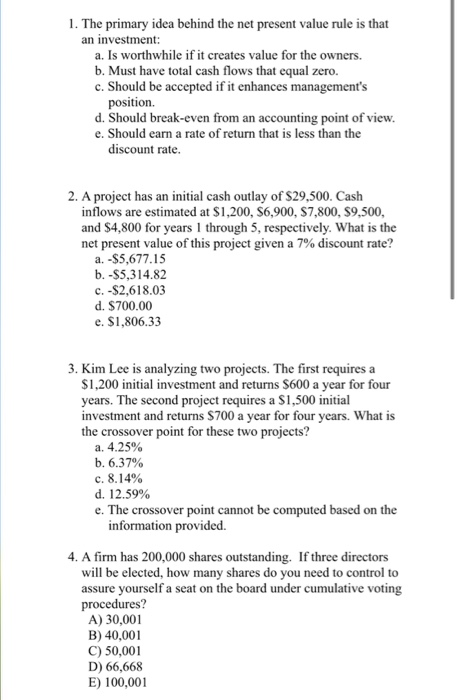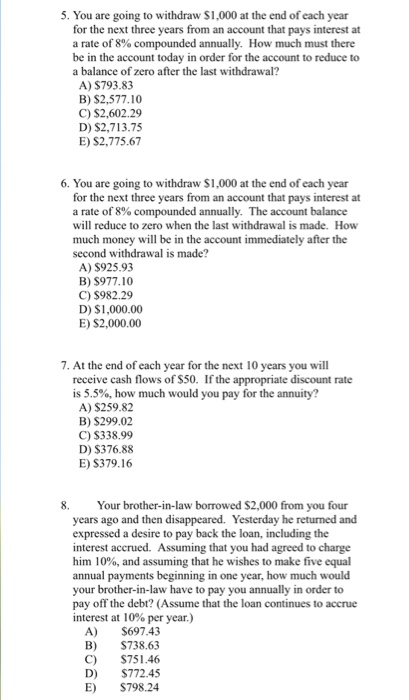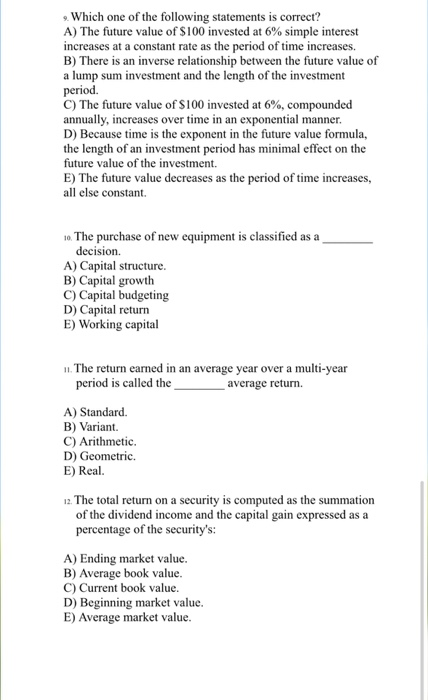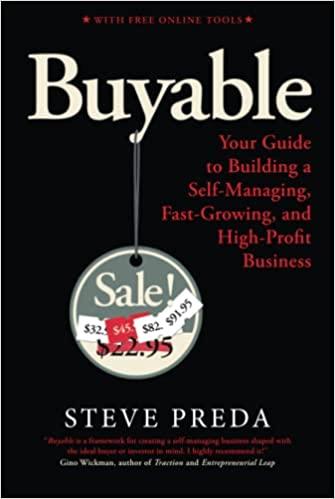1. The primary idea behind the net present value rule is that an investment: a. Is worthwhile if it creates value for the owners. b. Must have total cash flows that equal zero. c. Should be accepted if it enhances management's position. d. Should break-even from an accounting point of view. e. Should earn a rate of return that is less than the discount rate. 2. A project has an initial cash outlay of S29,500. Cash inflows are estimated at $1,200, S6,900, S7,800, 9,500, and $4,800 for years 1 through 5, respectively. What is the net present value of this project given a 7% discount rate? a. -$5,677.15 b. -$5,314.82 C. -$2,618.03 d. $700.00 e. $1,806.33 3. Kim Lee is analyzing two projects. The first requires a $1,200 initial investment and returns $600 a year for four years. The second project requires a $1,500 initial investment and returns $700 a year for four years. What is the crossover point for these two projects? a. 4.25% b. 6.37% c. 8.14% d. 12.59% e. The crossover point cannot be computed based on the information provided. 4. A firm has 200,000 shares outstanding. If three directors will be elected, how many shares do you need to control to assure yourself a seat on the board under cumulative voting procedures? A) 30,001 B) 40,001 C) 50,001 D) 66,668 E) 100,001 5. You are going to withdraw $1,000 at the end of each year for the next three years from an account that pays interest at a rate of 8% compounded annually. How much must there be in the account today in order for the account to reduce to a balance of zero after the last withdrawal? A) $793.83 B) $2,577.10 C) $2,602.29 D) $2,713.75 E) $2,775.67 6. You are going to withdraw $1,000 at the end of each year for the next three years from an account that pays interest at a rate of 8% compounded annually. The account balance will reduce to zero when the last withdrawal is made. How much money will be in the account immediately after the second withdrawal is made? A) $925.93 B) $977.10 C) $982.29 D) $1,000.00 E) $2,000.00 7. At the end of each year for the next 10 years you will receive cash flows of $50. If the appropriate discount rate is 5.5%, how much would you pay for the annuity? A) $259.82 B) S299.02 C) $338.99 D) $376.88 E) $379.16 8. Your brother-in-law borrowed $2,000 from you four years ago and then disappeared. Yesterday he returned and expressed a desire to pay back the loan, including the interest accrued. Assuming that you had agreed to charge him 10%, and assuming that he wishes to make five equal annual payments beginning in one year, how much would your brother-in-law have to pay you annually in order to pay off the debt? (Assume that the loan continues to accrue interest at 10% per year.) A) $697.43 B) $738.63 C) $751.46 D) $772.45 E) $798.24 Which one of the following statements is correct? A) The future value of $100 invested at 6% simple interest increases at a constant rate as the period of time increases. B) There is an inverse relationship between the future value of a lump sum investment and the length of the investment period. C) The future value of $100 invested at 6%, compounded annually, increases over time in an exponential manner. D) Because time is the exponent in the future value formula, the length of an investment period has minimal effect on the future value of the investment. E) The future value decreases as the period of time increases, all else constant 10. The purchase of new equipment is classified as a decision. A) Capital structure B) Capital growth C) Capital budgeting D) Capital return E) Working capital 11. The return earned in an average year over a multi-year period is called the average return. A) Standard B) Variant. C) Arithmetic. D) Geometric. E) Real 12. The total return on a security is computed as the summation of the dividend income and the capital gain expressed as a percentage of the security's: A) Ending market value. B) Average book value. C) Current book value. D) Beginning market value. E) Average market value









